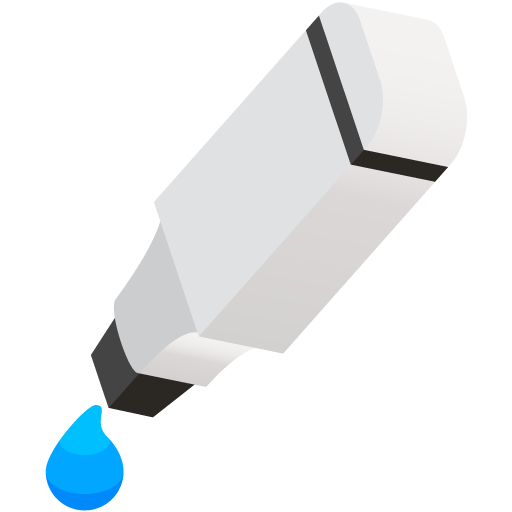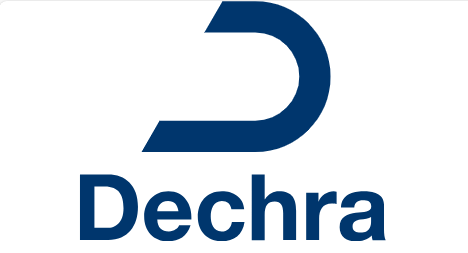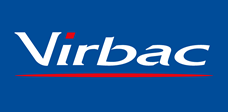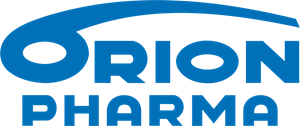Similar packages
Dectomax
Active substance
ATC code
Species
Cattle.
Indications
For treatment of infestations of gastrointestinal roundworms, lungworms, eyeworms, warbles, sucking and biting lice, mange mites and hornfly in cattle.
Gastrointestinal roundworms (adults and fourth stage larvae)
Ostertagia ostertagi (inc. inhibited larvae)
O. lyrata 1
Haemonchus placei
Trichostrongylus axei
T. colubriformis
Cooperia oncophora
C. punctata 1
C. surnabada 1 (syn. mcmasteri)
Bunostomum phlebotomum 1
Oesophagostomum radiatum
Trichuris spp. 1
1 adults
Lungworms (adults and fourth stage larvae)
Dictyocaulus viviparus
Eyeworms (adults)
Thelazia spp.
Warbles (parasitic stages)
Hypoderma bovis, H. lineatum
Biting lice
Damalinia (Bovicola) bovis
Sucking lice
Haematopinus eurystemus,
Linognathus vituli,
Solenopotes capillatus
Mange mites
Psoroptes bovis,
Sarcoptes scabiei,
Chorioptes bovis
Horn fly
Haematobia irritans
Duration of activity
Following product administration, efficacy against re-infection with the following parasites persists for the period indicated:
|
Species |
Days |
|
Ostertagia ostertagi |
35 |
|
Cooperia oncophora |
28 |
|
Dictyocaulus viviparus |
42 |
|
Linognathis vituli |
49 |
|
Oesophagostomum radiatum |
21 |
|
Damalinia (Bovicola) bovis |
42 |
|
Trichostrongylus axei |
28 |
|
Solenopotes capillatus |
35 |
The product also controls horn flies (Haematobia irritans) for at least 42 days after treatment.
Dose to be administered and administration route
A single treatment of 1 ml (5 mg doramectin) per 10 kg bodyweight, equivalent to 500 µg/kg bodyweight, applied topically along the mid-line of the back in a narrow strip between the withers and tail head.
To ensure administration of a correct dose, bodyweight should be determined as accurately as possible; accuracy of the dosing device should be checked.
If animals are to be treated collectively rather than individually, they should be grouped according to their bodyweight and dosed accordingly, in order to avoid under- and over- dosing.
Dosage table
|
Bodyweight (kg) |
Dose Volume (ml) |
Doses per 1 Litre Pack |
Doses per 2.5 Litre Pack |
Doses per 3 Litre Pack |
Doses per 5 Litre Pack |
|
150 |
15 |
66 |
166 |
200 |
333 |
|
200 |
20 |
50 |
125 |
150 |
250 |
|
250 |
25 |
40 |
100 |
120 |
200 |
|
300 |
30 |
33 |
83 |
100 |
166 |
|
350 |
35 |
28 |
71 |
85 |
142 |
|
400 |
40 |
25 |
62 |
75 |
125 |
|
450 |
45 |
22 |
55 |
66 |
111 |
|
500 |
50 |
20 |
50 |
60 |
100 |
|
600 |
60 |
16 |
41 |
50 |
83 |
|
700 |
70 |
14 |
35 |
42 |
71 |
Adverse reactions
Target species: Cattle
|
Very rare 1 to 10 animals / 10,000 animals treated): |
Application site reaction NOS |
Reporting adverse events is important. It allows continuous safety monitoring of a veterinary medicinal product. Reports should be sent, preferably via a veterinarian, to either the marketing authorisation holder or its local representative or the national competent authority via the national reporting system. See also section 16 of the package leaflet for contact details.
Dispensing
POM-VPS - Prescription Only Medicine – Veterinarian, Pharmacist, SQPSUMMARY OF PRODUCT CHARACTERISTICS
1. NAME OF THE VETERINARY MEDICINAL PRODUCT
Dectomax 5 mg/ml Pour-on Solution for Cattle
2. QUALITATIVE AND QUANTITATIVE COMPOSITION
Each ml contains:
Active substance
Doramectin 5.0 mg
Excipient
Butylated hydroxytoluene not more than 0.05 mg
For the full list of excipients, see section 6.1
3. PHARMACEUTICAL FORM
Pour-on solution.
Clear, colourless solution.
4. CLINICAL PARTICULARS
4.1 Target species
Cattle.
4.2 Indications for use, specifying the target species
For treatment of infestations of gastrointestinal roundworms, lungworms, eyeworms, warbles, sucking and biting lice, mange mites and hornfly in cattle.
Gastrointestinal roundworms (adults and fourth stage larvae)
Ostertagia ostertagi (inc. inhibited larvae)
O. lyrata1
Haemonchus placei
Trichostrongylus axei
T. colubriformis
Cooperia oncophora
C. punctata1
C. surnabada1 (syn. mcmasteri) Bunostomum phlebotomum1
Oesophagostomum radiatum
Trichuris spp.1
1 adults
Lungworms (adults and fourth stage larvae)
Dictyocaulus viviparus
Eyeworms (adults) Thelazia spp.
Warbles (parasitic stages)
Hypoderma bovis, H. lineatum
Biting lice
Damalinia (Bovicola) bovis
Sucking lice
Haematopinus eurystemus,
Linognathus vituli,
Solenopotes capillatus
Mange mites
Psoroptes bovis,
Sarcoptes scabiei,
Chorioptes bovis
Horn fly
Haematobia irritans
Duration of activity
Following product administration, efficacy against re-infection with the following parasites persists for the period indicated:
|
Species |
Days |
|
Ostertagia ostertagi |
35 |
|
Cooperia oncophora |
28 |
|
Dictyocaulus viviparus |
42 |
|
Linognathis vituli |
49 |
|
Oesophagostomum radiatum |
21 |
|
Damalinia (Bovicola) bovis |
42 |
|
Trichostrongylus axei |
28 |
|
Solenopotes capillatus |
35 |
The product also controls horn flies (Haematobia irritans) for at least 42 days after treatment.
4.3 Contraindications
The product has been formulated for topical application specifically for cattle. It should not be administered to other species as severe adverse reactions, including fatalities in dogs, may occur.
Do not use in cases of hypersensitivity to the active substance or any of the excipients.
See section 4.5.
4.4 Special warnings for each target species
For external use only.
Care should be taken to avoid the following practices because they increase the risk of development of resistance and could ultimately result in ineffective therapy: - too frequent and repeated use of anthelmintics from the same class, over an extended period of time.
- under dosing, which may be due to underestimation of bodyweight, misadministration of the product, or lack of calibration of a dosing device (if any).
Resistance to doramectin and other avermectins has been reported in gastrointestinal nematodes, especially Cooperia oncophera and Ostertagia ostertagi, in cattle. Therefore, the use of this product should be based on local (regional, farm) epidemiological information about susceptibility of the target nematodes and recommendations on how to limit further selection for resistance to anthelmintics.
Suspected clinical cases of resistance to anthelmintics should be further investigated using appropriate tests (e.g. faecal egg count reduction test). Where the results of the test(s) strongly suggest resistance to a particular anthelmintic, an anthelmintic belonging to a different pharmacological class and having a different mode of action should be used.
Do not apply to areas of skin that are contaminated with mud or manure.
Therapeutic efficacy for internal and external parasites is not affected by heavy rainfall (2 cm in 1 hour) either before (20 minutes) or after (20 and 40 minutes) treatment. The influence of extreme weather conditions on efficacy is unknown.
4.5 Special precautions for use
Special precautions for use in animals
Avermectins may not be well tolerated in all non-target species. Cases of intolerance with fatal outcome are reported in dogs, especially Collies, old English Sheepdogs and related breeds or crosses, and also in turtles/tortoise. Care should be taken to avoid ingestion of spilled product or access to containers by these other species.
To avoid secondary reactions due to death of Hypoderma larvae in the oesophagus or the spine, it is recommended to administer the product at the end of the period of warble fly activity and before the larvae reach their resting sites. Consult your veterinary surgeon on the correct timing of treatment.
Disease associated with warble fly is notifiable in some regions.
Special precautions to be taken by the person administering the veterinary medicinal product to animals
People with known hypersensitivity to the doramectin should avoid contact with the product. Do not smoke or eat while handling the product. Wash hands after use. The product may be irritating to human skin and eyes and users should be careful not to apply it to themselves or to other people. Operators should wear impermeable rubber gloves and boots with a waterproof coat when applying the product. Protective clothing should be washed after every use. If accidental skin contact occurs, wash the affected area immediately with soap and water. If irritation persists, seek medical attention. If accidental eye exposure occurs, flush the eyes immediately with clean water and seek medical attention immediately. Avoid accidental inhalation of this product, as this may cause drowsiness and dizziness. Use only in well ventilated areas or outdoors.
Highly Flammable - Keep away from heat, sparks, open flame or other sources of ignition.
Special precautions for the protection of the environment
Doramectin is very toxic to dung fauna and aquatic organisms and may accumulate in sediments.
The risk to aquatic ecosystems and dung fauna can be reduced by avoiding too frequent and repeated use of doramectin (and products of the same anthelmintic class) in cattle.
The risk to aquatic ecosystems will be reduced by keeping treated cattle away from water bodies for five weeks after treatment.
Other precautions
Not applicable
4.6 Adverse reactions (frequency and seriousness)
Target species: Cattle
|
Very rare 1 to 10 animals / 10,000 animals treated): |
Application site reaction NOS |
Reporting adverse events is important. It allows continuous safety monitoring of a veterinary medicinal product. Reports should be sent, preferably via a veterinarian, to either the marketing authorisation holder or its local representative or the national competent authority via the national reporting system. See also section 16 of the package leaflet for contact details.
4.7 Use during pregnancy, lactation or lay
Do not use in non-lactating dairy cows, including pregnant heifers, within 60 days prior to calving.
4.8 Interaction with other medicinal products and other forms of interaction
None known.
4.9 Amount(s) to be administered and administration route
A single treatment of 1 ml (5 mg doramectin) per 10 kg bodyweight, equivalent to 500 µg/kg bodyweight, applied topically along the mid-line of the back in a narrow strip between the withers and tail head.
To ensure administration of a correct dose, bodyweight should be determined as accurately as possible; accuracy of the dosing device should be checked.
If animals are to be treated collectively rather than individually, they should be grouped according to their bodyweight and dosed accordingly, in order to avoid under- and over- dosing.
Dosage table
|
Bodyweight (kg) |
Dose Volume (ml) |
Doses per 1 Litre Pack |
Doses per 2.5 Litre Pack |
Doses per 3 Litre Pack |
Doses per 5 Litre Pack |
|
|
|
|
|
|
|
|
150 |
15 |
66 |
166 |
200 |
333 |
|
200 |
20 |
50 |
125 |
150 |
250 |
|
250 |
25 |
40 |
100 |
120 |
200 |
|
300 |
30 |
33 |
83 |
100 |
166 |
|
350 |
35 |
28 |
71 |
85 |
142 |
|
400 |
40 |
25 |
62 |
75 |
125 |
|
450 |
45 |
22 |
55 |
66 |
111 |
|
500 |
50 |
20 |
50 |
60 |
100 |
|
600 |
60 |
16 |
41 |
50 |
83 |
|
700 |
70 |
14 |
35 |
42 |
71 |
4.10 Overdose (symptoms, emergency procedures, antidotes), if necessary
Overdoses up to 5 times the label recommended dose resulted in no clinical signs that could be attributed to treatment with Doramectin.
4.11 Withdrawal period(s)
Meat and offal: 35 days.
Not permitted for use in lactating animals producing milk for human consumption.
Do not use in pregnant cows or heifers, which are intended to produce milk for human consumption, within 2 months of expected parturition.
5. PHARMACOLOGICAL PROPERTIES
Pharmacotherapeutic group:
Pharmacotherapeutic group: macrocyclic lactones, avermectins
ATCvet code: QP 54AA03
5.1 Pharmacodynamic properties
Doramectin is a fermentation-derived antiparasitic agent, which belongs to the avermectin class, and is closely related structurally to ivermectin. Both compounds share a wide spectrum of antiparasitic activity and produce a similar paralysis in nematodes and parasitic arthropods. Whilst it is not possible to assign a single mode of action to the avermectins, it is likely that the entire series share a common mechanism. In parasitic organisms the effect is mediated through a specific avermectin-binding site. The physiological response to avermectin binding is an increase in membrane permeability to chloride ions. In invertebrate nervous tissue an influx of chloride ions into the excitatory motor neurone in nematodes or muscle cell of arthropods results in hyperpolarisation and the elimination of signal transmission with resulting paralysis.
5.2 Pharmacokinetic particulars
Maximum plasma concentration of Doramectin occurs in cattle approximately 9 days after topical administration of the product. An (apparent) elimination half-life of around 10 days results in sustained Doramectin concentrations, which protect animals from parasitic infection and re-infection for extended periods following treatment.
5.3 Environmental properties
Like other macrocyclic lactones, doramectin has the potential to adversely affect non-target organisms. Following treatment, excretion of potentially toxic levels of doramectin may take place over a period of several weeks. Faeces containing doramectin excreted onto pasture by treated animals may reduce the abundance of dung feeding organisms which may impact on the dung degradation.
Doramectin is very toxic to aquatic organisms and may accumulate in sediments.
6. PHARMACEUTICAL PARTICULARS
6.1 List of excipients
Butylated hydroxytoluene
Triethanolamine
Cetostearyl Octanoate
Isopropyl alcohol
6.2 Major incompatibilities
In the absence of compatibility studies, this veterinary medicinal product must not be mixed with other veterinary medicinal products.
6.3 Shelf life
Shelf life of the veterinary medicinal product as packaged for sale: 5 years
Shelf life after first opening the immediate packaging: 1 year
6.4 Special precautions for storage
Do not refrigerate
Protect from light
6.5 Nature and composition of immediate packaging
The product will be supplied in:
- 1 L, 2.5 L, 3 L, 5 L, 6 L (5L + 1 L) and 8 L (5 L + 3 L) high-density polyethylene bottles with a tamper evident cap in a carton box. Not all pack sizes may be marketed
6.6 Special precautions for the disposal of unused veterinary medicinal product or waste materials derived from the use of such products
Medicines should not be disposed of via wastewater.
The veterinary medicinal product should not enter water courses as doramectin may be dangerous for fish and other aquatic organisms. Do not contaminate ponds, waterways or ditches with the product or used container.'
Any unused veterinary medicinal product or waste materials derived from such veterinary medicinal product should be disposed of in accordance with local requirements
7 MARKETING AUTHORISATION HOLDER
C&H Generics Limited c/o Michael McEvoy & Co.
Seville House
New Dock Street
Galway
Ireland
8. MARKETING AUTHORISATION NUMBER
Vm 40162/5001
9. DATE OF FIRST AUTHORISATION
24 August 2023
10. DATE OF REVISION OF THE TEXT
August 2023
11. CLASSIFICATION OF VETERINARY MEDICINAL PRODUCT
Veterinary medicinal product subject to prescription
Approved 24 August 2023
![]()

| Art. Nr. | 40162/5001 |
|---|---|
| EAN | 5014602800246 |
 TRUSTED SOURCE
TRUSTED SOURCE








